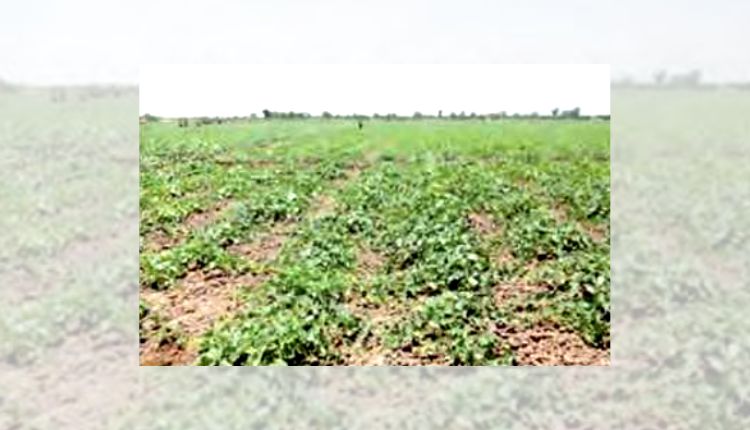Peta cultivation method in melon cultivation
Know what is the technique and why it is becoming popular, Good quality melons are being grown using less water and less fertilizers
Summer special fruit melon is cultivated mainly in Rajasthan, Punjab, Uttar Pradesh, Bihar, Maharashtra and Tamil Nadu. Light sandy loam soil is considered good for melon cultivation. It is also necessary to have proper drainage system in the field, because water logging increases the risk of diseases in the plants. Warm climate is suitable for its cultivation. Therefore, the climate and soil of Rajasthan is good for the production of muskmelon. However, there is always a shortage of water for cultivation, so the farmers here have developed a special method for cultivating melons, which is called the Peta cultivation method. In this, good quality melons are being grown with less water and fertilizers.

What is the Peta Farming method of Melon cultivation?
Most of the farmers of Rajasthan’s Jalore, Pali and Jodhpur districts are cultivating melon by this method. After the month of January, when the water of the dam starts decreasing or ending rapidly, the surface from which the water has decreased, remains moist. Melons are grown using this soil moisture, because this soil is more fertile. That’s why there is no need to add fertilizer to it.
If melons are grown in moist places, then this technique of farming is called Peta Farming method. Small and poor farmers have benefited from this as they can get a good crop without much input, which leads to higher profits.

Quality melons in less time with less resources
Since no fertilizer is used in this method, the melon is more palatable and sweeter. Gives a feeling of coolness in the summer season. Due to good quality, this melon is in high demand in the market and it is sold immediately. Its one fruit is of half to one kilo. Due to its small size, it is not perishable and can be sent over long distances. With this technique, quality melons are obtained in less time with less resources. Melon crop is ready in two and a half to three months after sowing i.e. if sown in February-March, the crop is ready for harvesting by June.
How to sow?
Sowing is done after the seeds have germinated. After washing the seeds with cold water, bags of 300-500 grams are made for germination. This is sprinkled with lukewarm water and kept at the place where the grains are stored. Then 3-4 gunny bags are put on top so that due to the heat, germination takes place quickly. Germination starts within 2 days. Then take it out and put it in the pot. Now make pits of 10-15 cm size and sow the seeds at 4-6 cm. Sow in rows and keep row to row distance of 4 feet. Plant to plant distance can be kept up to one feet.
Mostly Kajari variety of muskmelon is sown under Peta cultivation method. The colour of this variety ranges from dark green to light brown. Seeds start germinating 5-6 days after sowing. Use insecticides to protect against pests and diseases. In the first pit, 3-4 plants are allowed to remain, but when they are a little big, only two plants are kept so that the vine of the melon plants can spread well.

In how many days the crop is ready?
Plants start flowering after two months of sowing and in two and a half to three months the crop is ready to be sold in the market. To take to the mandi, pluck the melons a day before in the afternoon and fill them in baskets, tractors or mini trucks. Try to reach the market by 4 am the next day to sell. The melon is very popular with the local people as well as in the nearby mandis because of its good taste. It is sold out immediately.
Pema Ram, one of the many farmers planting melons in the Hemawas Dam on the Ajmer-Ahmedabad National Highway, has been planting melons in 10 bighas for the last 5 years. From this he is earning an annual profit of around Rs.2,25,000 annually.
Contact us: If farmers want to share information or experiences related to farming with us, then they can do this by calling us on the phone number 9599273766 or by writing an email to [email protected] or by sending your recording. Through Kisan of India, we will convey your message to the people, because we believe that if the farmers are advanced then the country is happy.



